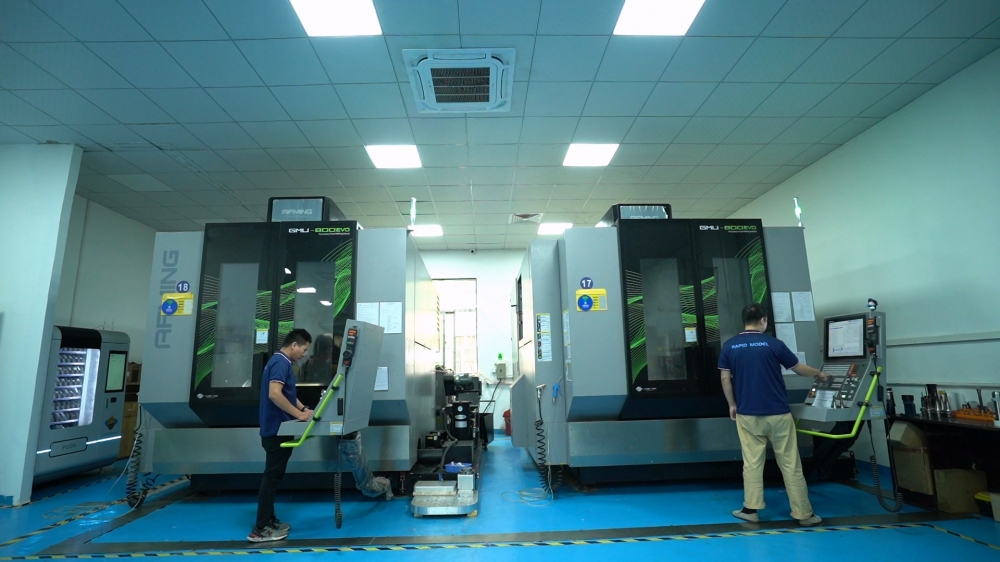1. Introduction
2. Basic Concepts
3+2 Axis Machining:
5-Axis Machining:
3. Structure and Motion Comparison
| Feature | 3+2 Axis Machining | 5-Axis Machining |
|---|---|---|
| Motion Method | Positioning first, then 3-axis cutting | All five axes move simultaneously |
| Suitable Workpiece | Workpieces with fixed angles | Complex surfaces and multi-angle workpieces |
| Machining Flexibility | Lower, limited by positioning angle | High, capable of handling complex shapes |
| Machining Accuracy | High, but limited by positioning precision | Extremely high, suitable for high-precision requirements |
4. Advantages and Limitations
3+2 Axis Machining Advantages:
- Can use shorter, more rigid cutting tools.
- Tools can be angled relative to the surface, allowing the spindle head to reach lower and closer to the workpiece.
- Shorter tool travel distances and simpler program codes.
3+2 Axis Machining Limitations:
- Typically sets a fixed angle for the spindle. Complex workpieces may require multiple tilted setups, increasing tool path overlaps and machining time.
5-Axis Machining Advantages:
- Eliminates the need for specialized fixtures, reducing fixture costs and avoiding repeated setups, improving mold machining precision.
- Fewer workholding devices required.
- Reduces the need for special tools, lowering tooling costs.
- Increases effective cutting length of the tool, reduces cutting forces, extends tool life, and lowers overall costs.
5-Axis Machining Limitations:
- Slightly less rigid than 3+2 axis machining.
- Not always suitable for short tools or large tool holders; vibration cannot always be avoided at certain tilt angles, potentially causing higher machining error than 3-axis setups.
5. Cost and Investment Considerations
5-axis machining equipment is generally more expensive and requires higher operator skill levels. However, for high-precision and complex-shaped parts, it can significantly improve efficiency and reduce labor costs. 3+2 axis machining equipment is more budget-friendly, but may require additional manual intervention when handling complex workpieces.
6. Suitable Scenarios and Selection Advice
Choosing 3+2 Axis Machining:
- Suitable for simpler workpieces with fixed angles. It is an economical and practical choice.
Choosing 5-Axis Machining:
- Recommended for complex surfaces, high-precision parts, or multi-angle workpieces, as it provides higher efficiency and accuracy.
At Rapid Model, we provide professional CNC machining services. If you’re unsure whether to choose 3+2 axis or 5-axis machining, simply share your requirements with our engineering team. We will analyze your project and help you select the most suitable machining method to maximize efficiency and market competitiveness.



